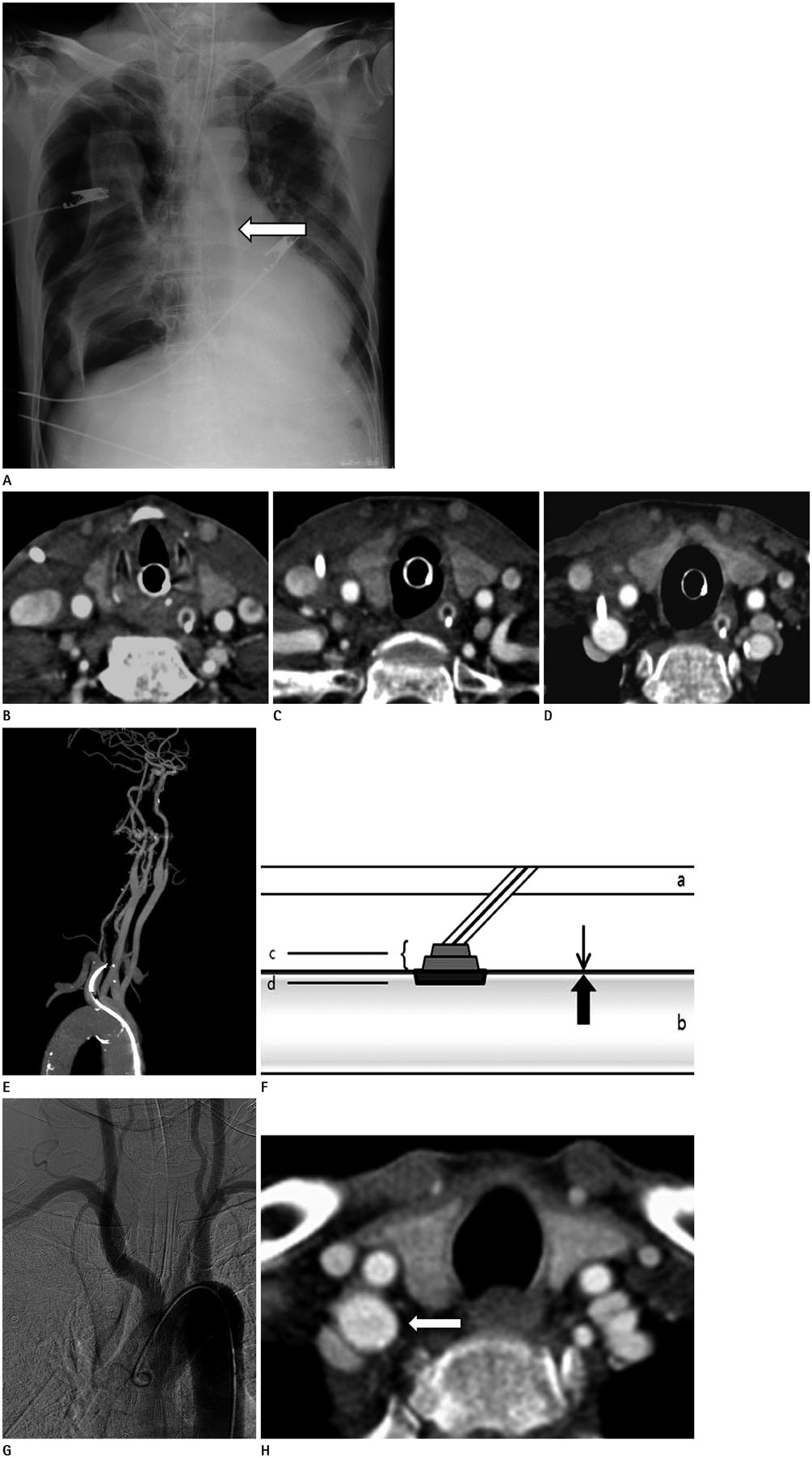J Korean Soc Radiol.
2017 Apr;76(4):282-286. 10.3348/jksr.2017.76.4.282.
Endovascular Repair of Inadvertent Arterial Injury Induced by Central Venous Catheterization Using a Vascular Closure Device: A Case Report
- Affiliations
-
- 1Department of Radiology, Samsung Changwon Hospital, Sungkyunkwan University School of Medicine, Changwon, Korea. yawoo114@naver.com
- 2Division of Cardiology, Department of Internal Medicine, Samsung Changwon Hospital, Sungkyunkwan University School of Medicine, Changwon, Korea.
- KMID: 2373966
- DOI: http://doi.org/10.3348/jksr.2017.76.4.282
Abstract
- Central venous catheterization can cause various complications. Inadvertent subclavian artery catheterization was performed during insertion of a central venous catheter in a 73-year-old man suffering from panperitonitis due to small-bowel perforation. Endovascular treatment was conducted to treat the injured subclavian artery with a FemoSeal vascular closure device.
MeSH Terms
Figure
Reference
-
1. McGee DC, Gould MK. Preventing complications of central venous catheterization. N Engl J Med. 2003; 348:1123–1133.2. Iovino F, Pittiruti M, Buononato M, Lo Schiavo F. [Central venous catheterization: complications of different placements]. Ann Chir. 2001; 126:1001–1006.3. Abi-Jaoudeh N, Turba UC, Arslan B, Hagspiel KD, Angle JF, Schenk WG, et al. Management of subclavian arterial injuries following inadvertent arterial puncture during central venous catheter placement. J Vasc Interv Radiol. 2009; 20:396–402.4. De Poli F, Leddet P, Couppie P, Daessle JM, Uhry S, Hanssen M. FemoSeal Evaluation Registry (FER). Prospective study of femoral arterial closure with a mechanical system on 100 patients who underwent angioplasty procedures. Ann Cardiol Angeiol (Paris). 2014; 63:339–344.5. Holm NR, Sindberg B, Schou M, Maeng M, Kaltoft A, Bøttcher M, et al. Randomised comparison of manual compression and FemoSeal™ vascular closure device for closure after femoral artery access coronary angiography: the CLOSure dEvices Used in everyday Practice (CLOSE-UP) study. EuroIntervention. 2014; 10:183–190.6. Wanitschek MM, Suessenbacher A, Dörler J, Pachinger O, Moes N, Alber HF. Safety and efficacy of femoral artery closure with the FemoSeal(R) device after coronary angiography using a 7 French sheath. Perfusion. 2011; 26:447–452.7. Leijdekkers VJ, Go HL, Legemate DA, Reekers JA. The use of a percutaneous closure device for closure of an accidental puncture of the aortic arch; a simple solution for a difficult problem. Eur J Vasc Endovasc Surg. 2006; 32:94–96.
- Full Text Links
- Actions
-
Cited
- CITED
-
- Close
- Share
- Similar articles
-
- Inadvertent Arterial Catheterization of Central Venous Catheter: A Case Report
- Endovascular Repair Using Suture-Mediated Closure Devices and Balloon Tamponade following Inadvertent Subclavian Artery Catheterization with Large-Caliber Hemodialysis Catheter
- Percutaneous Suture-Based Closure Device for Management of Inadvertent Subclavian Artery Catheterization
- Inadvertent arterial insertion of a central venous catheter: delayed recognition with abrupt changes in pressure waveform during surgery: A case report
- Interpleural Displacement of Subclavian Catheter During Thoracotomy: A Case Report


